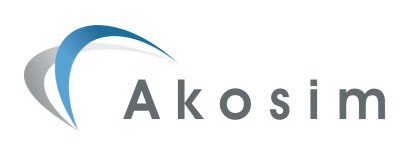Microwave
FUN Microwave is available as a stand-alone product or as part of the FUN wireless network-planning suite of tools. It is a powerful and feature-rich robust planning tool and is in use by large technology-driven customers planning complex networks with thousands of links. Its architecture supports both small and large work-group deployments, encompassing the entire engineering process from initial design to operation.
Principle Features Include:
Intuitive User Interface
The well-designed and intuitive graphical user interface (GUI) enables quick and easy access to features. Central to the GUI is a comprehensive network tree enabling users to quickly navigate through FUN.
Data Model
FUN provides a comprehensive data model covering all elements enabling a global view of the network. This includes location, sites, and equipment devices. It provides full network element configuration flexibility and enables users to model elements such as antennas, feeders, repeaters etc. The model is hierarchically structured and is offered inclusive of all network elements including (in addition to microwave) GSM, and UMTS elements. Co-located sites with other operators or services and shared sites are supported. Global updates and changes are easily made and associated attributes can be both extended and queried.
Geographic Information System (GIS)
FUN Microwave includes a sophisticated GIS as described in the System Overview brochure. It supports multi-resolution vector and raster data and multiple data formats.
Report Generator
A powerful report generator enabling both data and graphical results to be easily displayed, printed, and integrated into standard reports is provided.
Versioning
Powerful version management functionality permits each user to create and work with different network versions, which can be compared, analysed and committed to the project. The best-value design can be selected for example after comparing alternatives such as a new link, versus modified repeater, versus upgraded equipment. For comparison, versions can be displayed and analysed in several geographical windows simultaneously.
Version management functionality is a powerful tool in enabling analysis between planned and operating networks and for providing a better approach for substantiating cost savings.
Analyses
Dynamic Terrain Profiling
FUN supports dynamic profiling. Terrain profiling includes:
• Point to point Line of Sight (LOS)
• Path profile
• Earth curvature
• K factor
• Fresnel zones incl. frequency
• Clutter, clutter height
• Antenna height
• Plot profile
Multi-point intervisibility is supported enabling users to understand visibility between multiple site locations. Inter-visibility is shaded enabling quicker analysis of the candidate site location.
Interference Analysis
The FUN Microwave comprehensive interference analysis is supported for both link and multi-link comparisons. Links can also be selected by status, by specific design as implemented or on air, or by multi-link groups. Polygon or selection by filter is provided.
The above Figure 2 shows multi-coloured link interference that is outside the stated parameters. Analysis can determine if a link is causing interference to the microwave network. The interference analysis includes: interference between all paths in one group and full band interference of one path. The interference calculations include:
• Three dimensional interference analyses
• C/I-Calculation
• Obstruction losses
Automatic Channel Allocation
Manual, semi-automatic, and automatic frequency allocation is provided. This provides for efficient network-wide frequency reuse.
Path Outage
FUN Microwave provides both outage and link reliability calculations. These are based on such elements as:
• Multi-pathing
• Rain rates
• Antennas
• Transmitter powers
• Diversity
ITU Outage Algorithm ITU-R P. 530-9 and 10 are supported. These versions incorporate substantial changes regarding the prediction of radio relay paths and circuits, including completely new prediction methods for multi-path fading, revised formulae for the prediction of both the paths and the link’s performance and unavailability in order to design according to the planning objectives stated in ITU Rec. G.826 and 827.
Furthermore a method has been introduced to evaluate the rainfall intensity at any point on the globe when the point’s co-ordinates are known.
Other Supported Features include:
• Comprehensive link budget calculations
• Propagation models for 2-60 GHz
• Reflection point analysis
• Special functions for repeater location search
• Antenna pattern editor for both azimuth, tilt, and polarization
• Management of link groups, chains of links, rings of links, general device groups
• Antenna height optimisation
